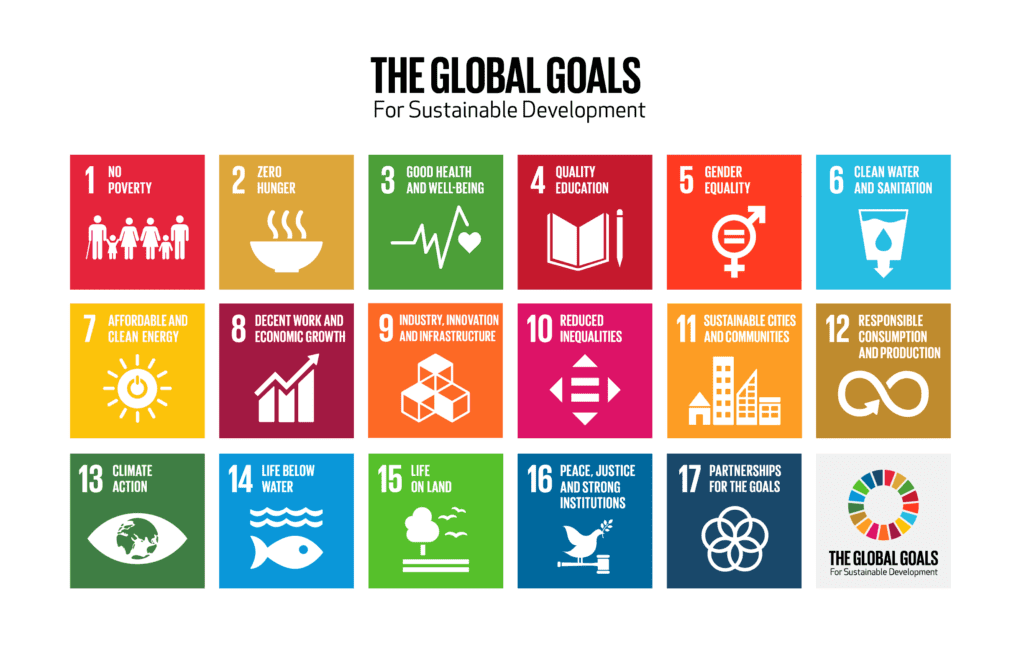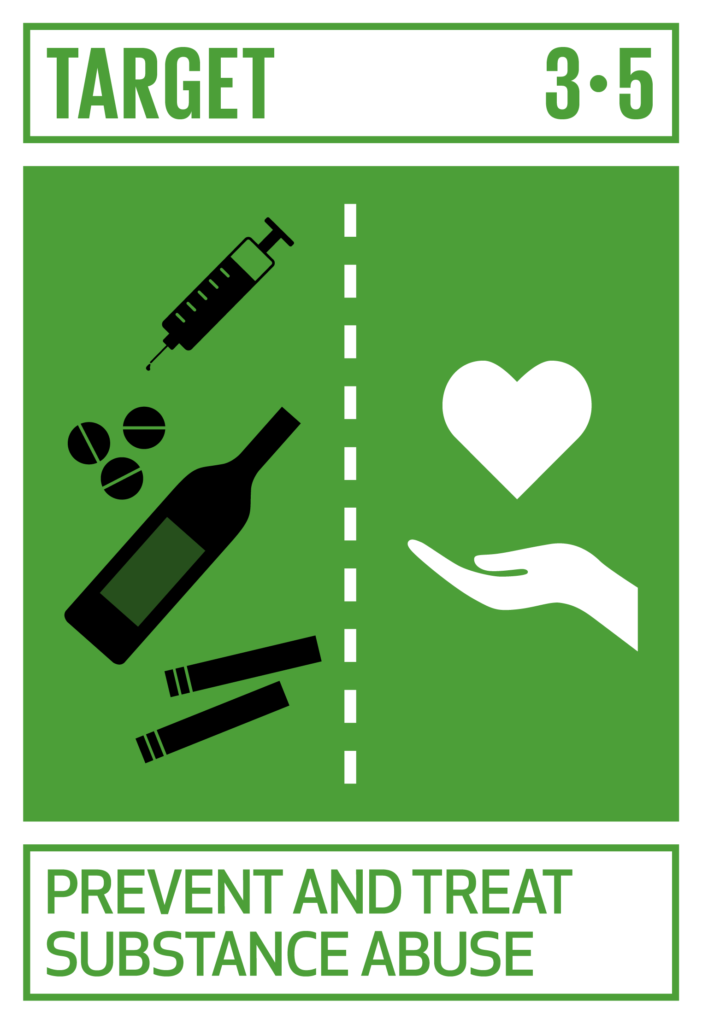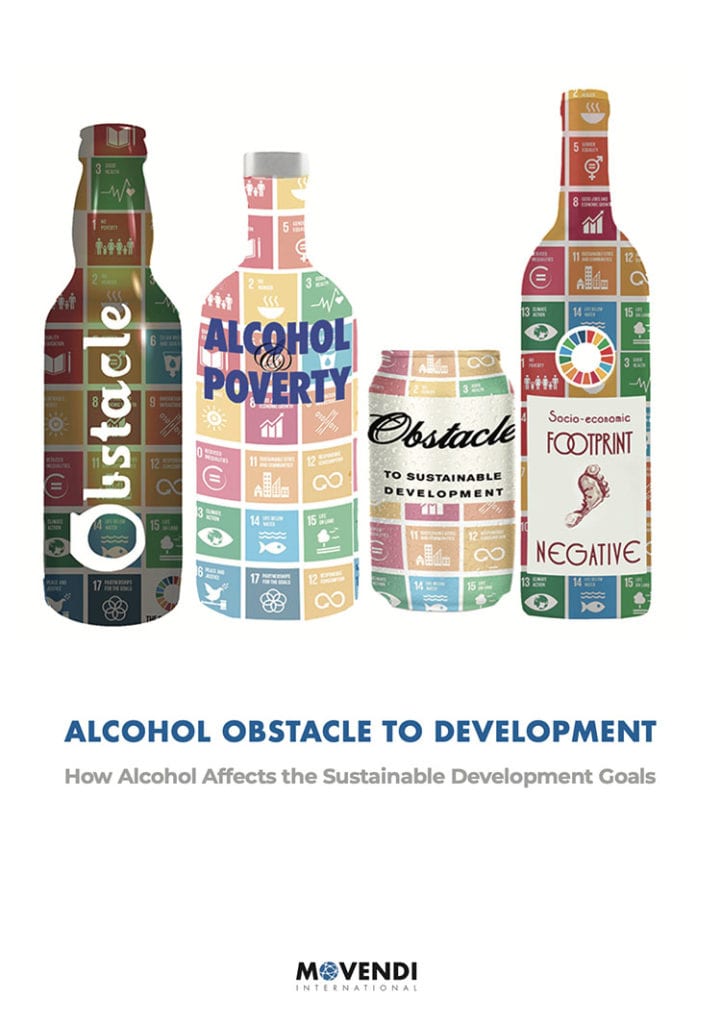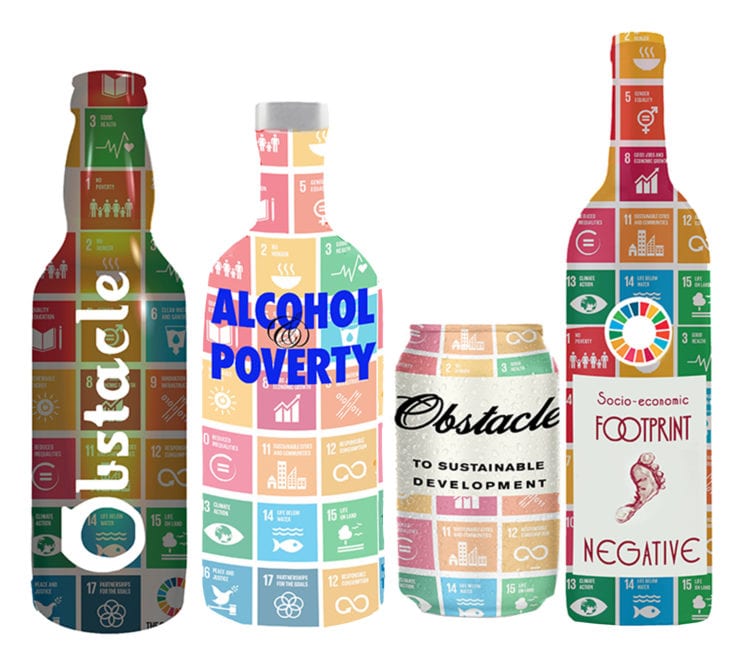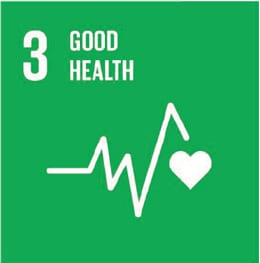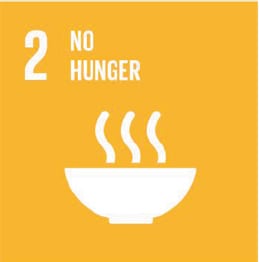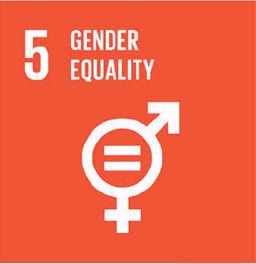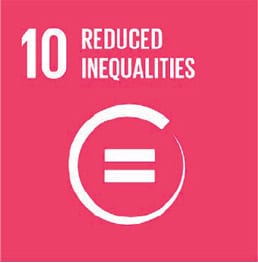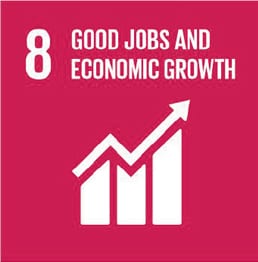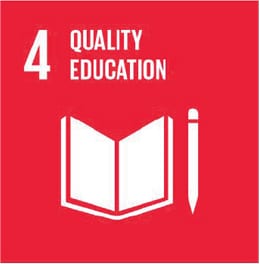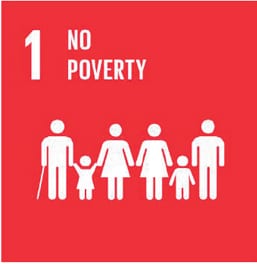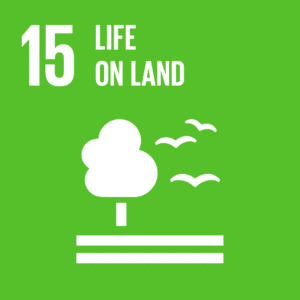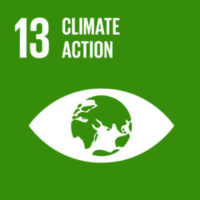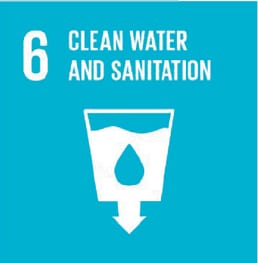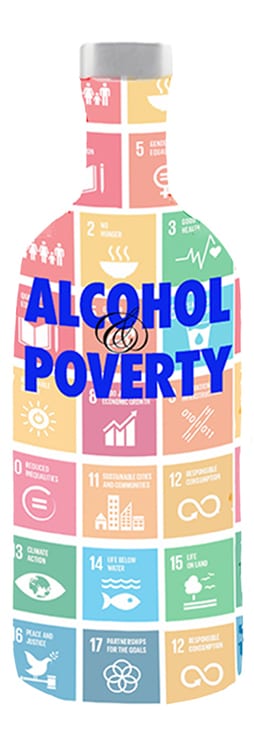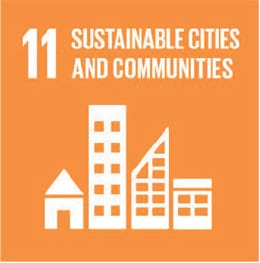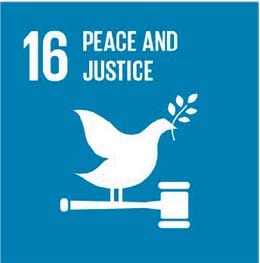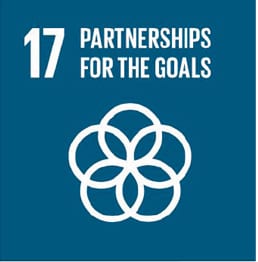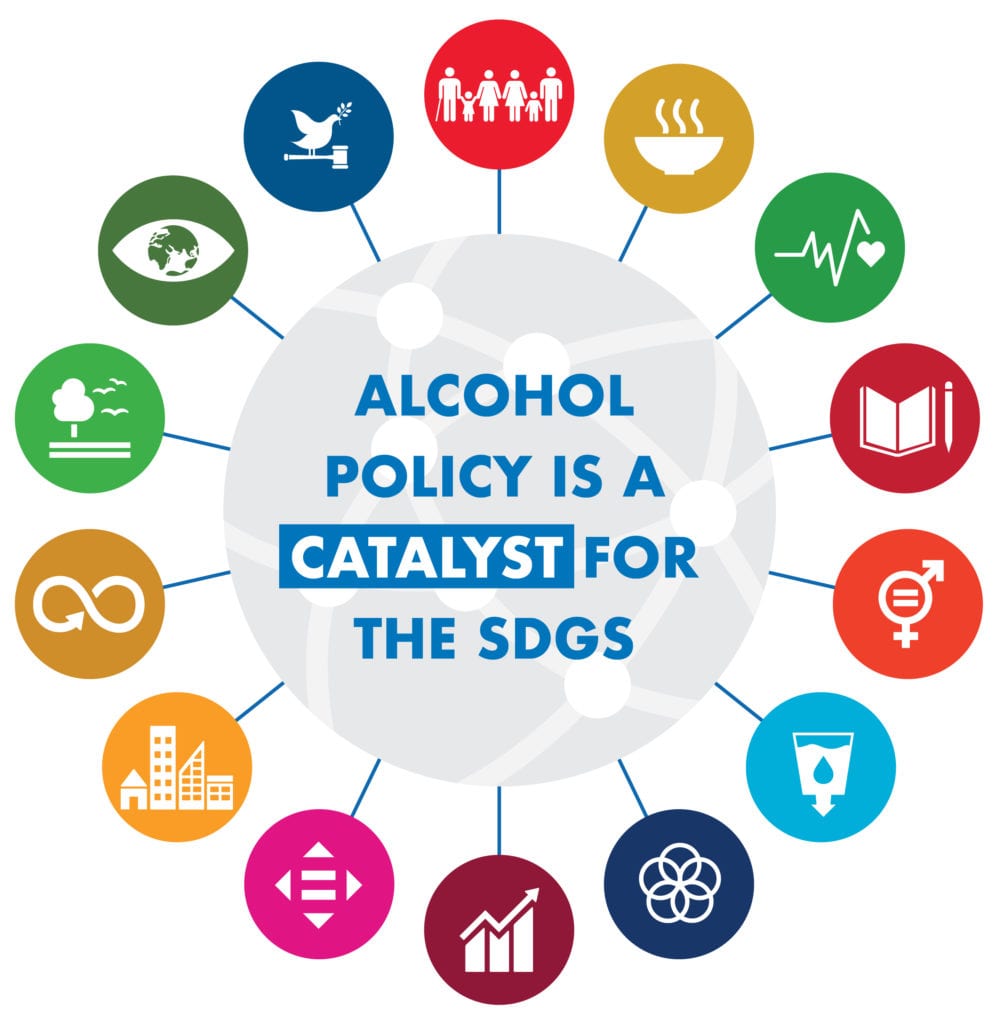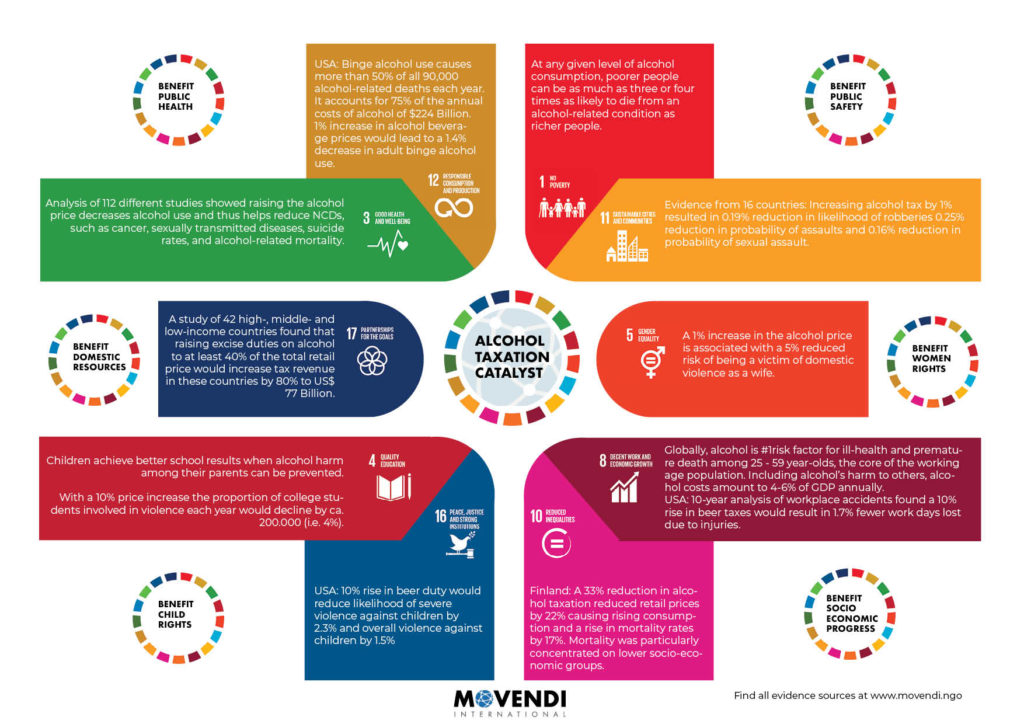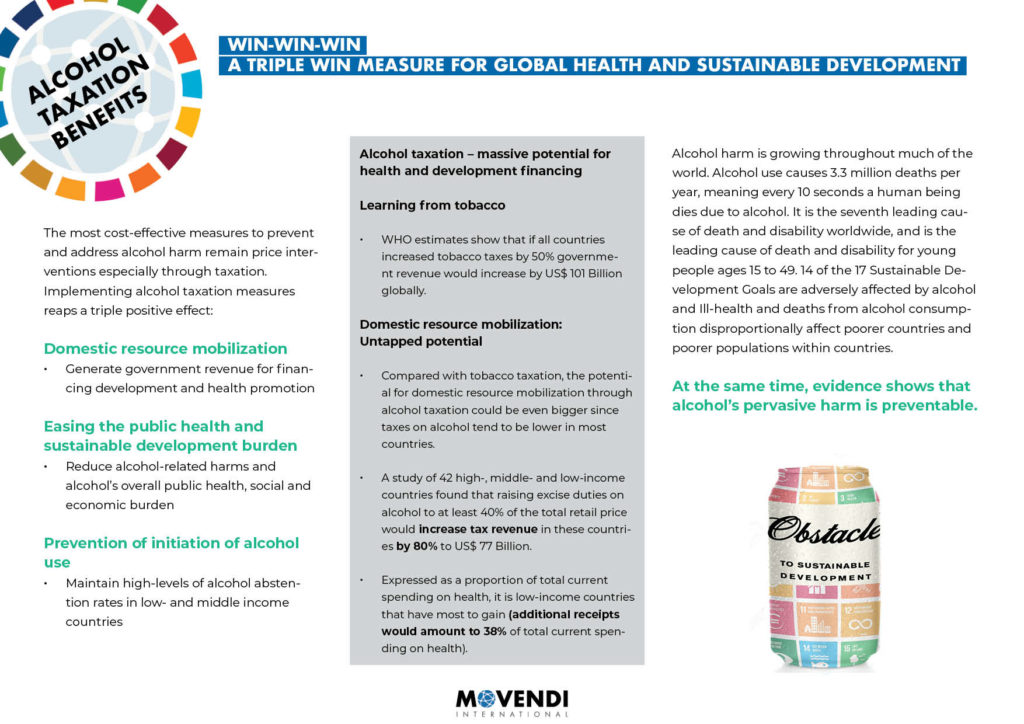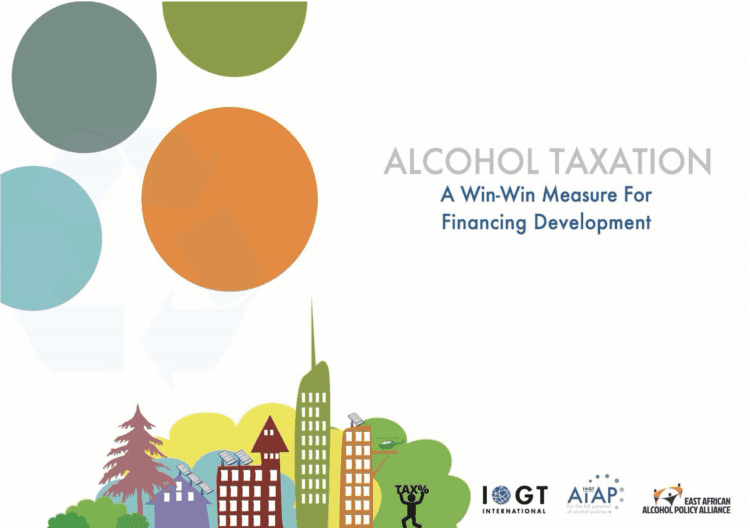Alcohol is a major obstacle to sustainable development
Through its multiple health, social and economic harms, alcohol is a massive obstacle to sustainable human development, adversely affecting all three dimensions of development and reaching into all aspects of society.
It is jeopardizing human capital, undermining economic productivity, destroying the social fabric and burdening health systems.
Alcohol adversely affects 14 out of 17 SDGs and a total of 54 targets.
Alcohol is specifically mentioned in SDG 3 on health and well-being.
Target 3.5 reads:
Strengthen the prevention and treatment of substance abuse, including narcotic drug abuse and harmful use of alcohol”
SDG 3.5
Evidence shows that alcohol is a cross-cutting risk factor in many areas of the 2030 Agenda, such as:
- Eradicating poverty;
- Ending hunger;
- Ensuring healthy lives for all;
- Ensuring quality education;
- Achieving gender equality;
- Ensuring drinking water for all;
- Promoting decent work and inclusive, sustainable economic growth for all;
- Reducing inequalities;
- Making cities safe and inclusive;
- Ensuring sustainable consumption;
- Combating climate change;
- Protecting terrestrial ecosystems;
- Promoting peaceful and inclusive societies; and
- Revitalizing the global partnership for the SDGs.
The 2030 Agenda for Sustainable Development
Alcohol and the 2030 Agenda for Sustainable Development, adopted by all United Nations Member States in 2015, provides a shared blueprint for peace and prosperity for people and the planet, now and into the future. At its heart are the 17 Sustainable Development Goals (SDGs) and 169 targets.
This comprehensive agenda is a plan of action for humanity to tackle the world’s biggest problems – coherently and systematically. The 17 SDGs cover all three aspects of sustainable human development: the social, environmental and economic dimension.
The SDGs and their targets are an urgent call for action by all countries – developed and developing – in a global partnership. They recognize that ending poverty and other deprivations must go hand-in-hand with strategies that improve health and education, reduce inequality, and spur economic prosperity – all while tackling climate change and working to preserve our oceans and forests.
How Alcohol Affects the Sustainable Development Goals
Alcohol kills 3 million people worldwide every year.
Every ten seconds a human being dies because of alcohol. This represents 5.3% of all deaths and more than 5% of the global disease burden. Mortality resulting from alcohol use is higher than that caused by diseases suchas tuberculosis, HIV/AIDS and diabetes.
Alcohol harm is of epidemic proportions worldwide.
Worldwide, alcohol is responsible for 7.2% of all premature mortality. Alcohol harms young people disproportionately. Among people between the ages of 15 and 49, alcohol is in fact the number one risk factor for death and disability, accounting for 10% of all deaths in this age group.
Clearly, alcohol is one of the biggest threats to population health worldwide.
Big Alcohol drives underdevelopment
In contrast to these facts, the alcohol industry drives underdevelopment and exploits people, communities and societies around the world to maximize private profits.
Big Alcohol is no partner for sustainable development.
The producers of alcohol and other unhealthy commodities are commercial determinants of ill-health, economic harm and under-development. The alcohol industry has often gone and keeps going to extraordinary lengths to undermine and influence public policy in ways that are unethical and harmful to the common good.
There is a fundamental conflict of interest at play when it comes to Big Alcohol and the SDGs.
To free people around the world from poverty, and to achieve the SDGs, it is fundamental to address the role alcohol plays in creating and exacerbating poverty and hindering sustainable development,” says Kristina Sperkova, Movendi International President.
The equation is simple and tells decision-makers what to do: Less alcohol consumption means less alcohol harm, which means less poverty, inequality, exploitation and more sustainable development.”
Kristina Sperkova, International President, Movendi International
*All evidence sources can be found in the extensive list of references in the new booklet “Alcohol Obstacle to Development. How alcohol affects the Sustainable Development Goals”.
New booklet: ALCOHOL OBSTACLE TO DEVELOPMENT
How Alcohol Affects the Sustainable Development Goals
Alcohol is an obstacle to achieving 14 out of 17 Sustainable Development Goals (SDGs) and at least 54 of 169 targets. It is a major obstacle to sustainable human development.
With the help of state-of-the-art evidence, our new, revised and upgraded book(let) shows for each of the 14 SDGs and 54 targets how alcohol affects them and it illustrates the potential of alcohol policy to function as catalyst for reaching the SDGs.
Basic facts: Alcohol obstacle to development
- Alcohol is a major obstacle to sustainable human development, adversely affecting all three dimensions of development and reaching into all aspects of society;
- Alcohol is jeopardizing human capital, undermining economic productivity, destroying the social fabric and burdening health systems;
- Alcohol kills 3 million people worldwide every year;
- That means: Every 10 seconds a human being dies because of alcohol;
- Worldwide, alcohol is responsible for 7.2% of all premature mortality.
- Alcohol harms young people disproportionately. Among people between the ages of 15 and 49, alcohol is in fact the number one risk factor for death and disability, accounting for 10% of all deaths in this age group.
Download the new, upgraded and revamped book(let) here (PDF).
Eroding Human Capital

Alcohol adversely affects human potential – across the life-course
Alcohol is an obstacle to development by jeopardizing human capital. In fact, alcohol is a major risk factor for lost human potential throughout the life course.
Human capital loss in childhood, adolescence, and youth
Children, adolescents and youth bear a disproportionate burden of alcohol harm.
The pathways are many: For example, parents have an immense influence over their children’s behavior during adolescence and on their children’s well-being through the life-course. Adolescents growing up with parents who have substance use problems are more likely to turn to self-destructive behaviors such as suicide attempts.
Alcohol use during pregnancy is a significant risk factor for adverse pregnancy outcomes, including stillbirth, premature birth, intrauterine growth retardation and low birth weight. A 2017 landmark study showed that the global prevalence of alcohol use during pregnancy in the general population amounts to almost 10%. Alcohol use during pregnancy risks a child’s health and development.
The effects of parental substance use disorders can lead to the following problems in their children:
- Mental health problems,
- Relationship problems,
- Financial problems,
- Family problems, and
- Imitation of risky behaviors.
Alcohol is neurotoxic to brain development, potentially leading, in childhood and adolescence, to structural hippocampal changes, and in adulthood to reduced brain volume.
Especially in poorer communities, in families affected by alcohol use disorder, and in Low- and Middle Income Countries (LMICs), alcohol tends to crowd out other more productive household spending, for example on education, health care and healthy food – thereby seriously eroding human potential.
Alcohol use has proven to be linked with a number of negative education-related consequences, including poor school engagement and performance, and school drop-out. There is strong evidence of causation at least from frequent alcohol use to adverse health, social and educational outcomes.
Alcohol clearly fuels all these risk factors for human capital, contributing to:
- Parental roles being neglected and abandoned,
- Scarce resources being wasted on alcohol, instead of healthy food, leisure time activities and school material,
- Resulting health issues further exacerbate the dire situation, fueling the vicious cycle,
- Norms and conditions for academic performance are undermined and eroded.
Alcohol harm erodes human capital in women and girls
Regarding the women and girls, alcohol fuels gender inequality, perpetuates harmful stereotypes and norms, and is a major risk factor for violence against women – all adding to substantial loss of human potential due to alcohol-fuelled exclusion and oppression of women and girls.
Losing human potential due to inequalities
Alcohol frequently fuels and fortifies inequalities between and within countries, hindering the development of human capital in less privileged societies, communities and neighborhoods.
Inequalities in alcohol-related harm exist based on factors including economic status, education, gender, ethnicityand place of residence. Harms from a given amount of alcohol consumption are higher for poorer alcohol users and their families than for richer alcohol consumers. In general, lower socioeconomic groups consume less alcohol overall and are more likely to be abstainers, but they experience higher levels of alcohol-related harm than wealthier groups with the same level of consumption – a significant challenge to human capital development in more vulnerable settings.
Alcohol consumption causes death and disability relatively early in life. In the age group 20 to 39 years approximately 13.5% of all deaths are alcohol-attributable.
Globally, alcohol consumption is the fifth leading risk factor for premature death and disability; among people between the ages of 15 and 49, it is the number one risk factor. This is the age range in which people are typically at their most productive economically.
Loss of healthy, quality life years due to alcohol
Alcohol is a leading risk factor for healthy live years lost and for loss of quality of life – which are other ways of expressing alcohol’s adverse effect on human capital.
In high-income countries older people suffer from increasing alcohol harm, threatening their potential to participate in family and community life.
Economic Development Dimension

Massive economic costs due to alcohol
Alcohol’s social damage, its harm to the people’s health and well-being, and to public and global health, alcohol’s costs on the criminal justice system, all create a heavy burden on the economy of any society. Alcohol costs any society more than the alcohol trade adds to the respective economy.
Alcohol workplace harm and lost productivity
Alcohol harms the productivity of companies especially burdening small and medium sized enterprises (SMEs) because the costs of alcohol harm in the workplace are relatively higher for SMEs and the impact is more strongly felt by smaller businesses. This is a crucial correlation because a significant proportion of the global workforce is employed by smaller enterprises.
Alcohol is a significant risk factor for absenteeism and presenteeism at work, largely in a dose response manner, with a relationship between societal and individual level of alcohol consumption and sickness absence.
- In the UK, as many as 89 000 people may be turning up to work hungover or under the influence of alcohol every day. The cost to the economy is up to £1.4 billion.
- 35% of 1300 UK construction workers surveyed had worked alongside people under the influence of alcohol.
Economic costs and GDP loss
The economic burden of alcohol worldwide is substantial, accounting for up to 5.44% of Growth Domestic Product (GDP) in some countries. Costs of alcohol harm have been measured in different regions and are of massive scale:
- European Union: €156 billion yearly,
- United States: $249 billion yearly,
- South Africa: Combined tangible and intangible costs of alcohol harm to the economy reached nearly ZAR300 billion or 10–12% of GDP,
- India: the burden of alcohol (1.45% of GDP) costs more than the entire spending on health by the government (1.1% of GDP),
- Australia: a conservative calculation of the social costs of alcohol amounted to $14.35 billion with the highest cost due to productivity losses (42.1%), traffic accidents (25.5%) and cost to the criminal justice system (20.6%).
Alcohol is the leading risk factor for death and disability among people aged 15 to 49 years worldwide. This is the age range in which people are typicallyat their most productive economically. Alcohol use disorders likely result in billions of dollars of lost wages each year.
Alcohol harm burdens economic prosperity of communities and societies by causing ill health and social problems and creating avoidable costs for the health and social care systems. Disability Adjusted Life Years (DALYs) show the extent to which alcohol harm is undermining societies’ investments into its citizens, especially young people.
Alcohol harm jeopardizes participation of youth in the economy
Alcohol and use of other harmful substances has proven to be linked with a number of negative education-related consequences, including poor school engagement and performance, and school drop-out.
Negative education-related outcomes globally due to alcohol use include poor educational performance, truancy, school drop-out, incompletion of secondary school and post- secondary education in a diverse array of developed and developing regions and countries.
- In 2013, over 14% of 16 to 24 year-olds in England (almost 900 000 youth) were not in employment, education or training (NEET).
- The concept of NEET carries potential to address a broad array of risk factors among adolescents, and youth, including issues of unemployment, early school leaving and labor market discouragement.
Vicious cycle of alcohol and poverty
Alcohol has various adverse effects on societies’ and people’s economic status while economic status in turn affects alcohol use and the relative burden of alcohol harm in many ways.
Rising alcohol consumption in poorer societies or in lower-income segments of populations is an obstacle to achieving SDG 1. The resources spent on alcohol are diverted from more productive and sustainable uses and the harms from alcohol use often include impoverishment as well as ill-health .
Alcohol can push people into poverty and lock them, their families and entire communities there over generations. The direct costs of alcohol harm to the household are often considerable and frequently underestimated – and put a big burden on development.
- Latin America: alcohol has become the leading cause of male death and disability threatening further progress and sustainable development.
- A study in Sri Lanka found that over 10% of male respondents reported spending as much as or more than their regular income on alcohol.
Environmental Development Dimension
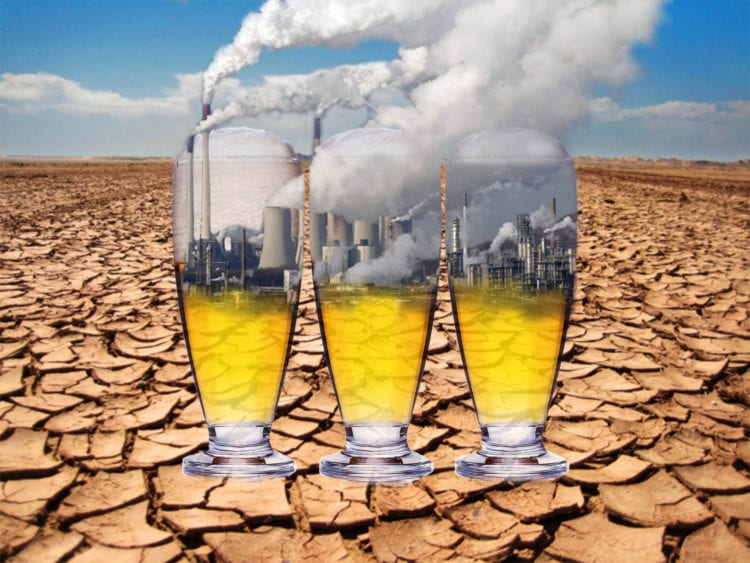
Pollution, water insecurity, ecosystem degradation: alcohol fuels climate crisis
Alcohol’s health, social, and economic harms are well known. But alcohol’s adverse effects on the environment, biodiversity, water and food resources and the climate are less well known. Nevertheless, they are real, severe and growing.
Very few people actually thinkof alcohol in terms of its climate impact. For achieving the goals of the 2030 Agenda, a more comprehensive understanding of the alcohol industry is critical.
Alcohol production degrades ecosystems and threatens biodiversity
Increasing levels of alcohol production are degrading farmland, jeopardize local food production and threaten the ecosystem. In King County, Washington State, USA, the alcohol industry is found to adversely impact rural and agricultural land, locally grown food supply and salmon migrating through local rivers by degrading all agricultural production districts and destroying the Sammamish Valley river ecosystem.
Alcohol production, consumption fuels climate crisis
Alcohol, particularly beer, fuels the climate crisis, according to calculations of greenhouse gas emissions.
- The yearly amount of Australian beer consumption is equal in emissions to a car driving 1.94 billion km – the equivalent of 48 000 car rides around the world.
- Emissions related to beer production and consumption cause the biggest damage to the climate when compared to other beverages such as coffee or tea.
Other aspects of the alcohol industry contributing to global warming, greenhouse gas emissions, high energy use, pollution and waste of natural resources are:
- Refrigeration in the hospitality sector,
- Use of fertilizers,
- Water use,
- Packaging,
- Waste,
- Transport of raw material,
- Distribution of the products.
Not green after all: Alcohol fuels greenhouse gas emissions and global warming.
The contribution made by the alcohol consumed in the UK accounts for 1.46% of the UK’s total greenhouse gas emissions. The share of beer in alcohol’s total emissions amounts to 65%
- In a lifecycle analysis of a Spanish beer, production and transport of raw materials used in beer production was found to contribute over one third of the total global environmental impact of the beer production lifecycle.
Levels of alcohol production and consumption are unsustainable
Alcohol production means – increasingly scarce – natural resources such as cereal crops are wasted for a “luxury good” instead of necessities.
The negative impact of alcohol production on availability of cereal crops for food, water security and food waste as well as the energy-consuming production processes are causing externalities that are unsustainable.
In 2018 a scientific analysisby Poore and Nemecek showed that lowering alcohol consumption by 20% can help
- reduce land use of alcohol production by 39% on average;
- reduce greenhouse gas emissions by 31 to 46%; and
- reduce scarcity-weighted fresh water withdrawals by 87%.
- Processing barley into malt is an energy-consuming process and barley production itself is highly vulnerable to unstable climate condition.
- In 2016, the global beer production amounted to about 1.94 billion hectoliters, up from 1.3 billion hectoliters in 1998. By some estimates, up to 92% of brewing ingredients are wasted.
- Levels of alcohol harm alcohol’s harm to others and the economic and social costs of alcohol make consumption levels and patterns unsustainable.
The alcohol industry receives the bulk of its profits from heavy alcohol use: 65% of sales in high-income countries and 75% of sales in middle- income countries result from heavy episodic alcohol intake. Big Alcohol relies on heavy and excessive alcohol use for major parts of its profits
What could be food and drinking water becomes toxic, addictive, carcinogenic substance
Alcohol production is jeopardizing natural resources, and is increasingly causing water shortages and food insecurity. Production of alcoholic beverages is very resource-intensive andNOT environmentally sustainable. In addition, climate change threatens to disrupt the supply of agricultural products.
A third of the world’s biggest groundwater systems are already in distress and about 4 billion people, representing nearly two-thirds of the world population, experience severe water scarcity during at least one month of the year. By 2025, an estimated 1.8 billion people will live in areas plagued by water scarcity, with two-thirds of the world’s population living in water-stressed regions.
This is happening at the same time as the alcohol industry is causing major emissions of chemicals into waterways in its production, around the world and is fuelling water insecurity.
Alcohol production is a threat to water security in many regions of the world:
- The water footprint of wine is horrible. To get one liter of wine, 870 liters of water are needed.
- The water footprint of beer is horrific. Per one liter of beer, 298 liters of water have to be used.
Social Development Dimension

Exclusion, deprivation, inequality, exploitation: Alcohol’s massive social harm
Alcohol harm is a Human Rights issue. The harms to health are only part of the total alcohol-related damage. It is especially a Women’s Rights, Child Rights and Indigenous People’s rights issue. In some parts of the world gender-based violence is alcohol-related in up to 80% of all cases. Alcohol harm exposes children to unhealthy environments, neglect and abuse, early onset of alcohol use and other detrimental factors in the socialization of children and young people.
Epidemic levels of alcohol harm all across society
Alcohol harm is of epidemic proportions worldwide. Harms from alcohol use occur not only to the consumers themselves, but also to those around them – to others in the family or household, to relatives and friends, to colleagues in the workplace and to strangers on the street.
Alcohol harms young people disproportionately. Alcohol plays a major role in perpetuating harmful gender norms, fueling the epidemic of violence against women. Alcohol frequently fuels and fortifies inequalities between and within countries. A disproportionate share of the health and economic costs of alcohol falls on poorer households.
Big Alcohol also fuels inequalities within societies. People with lower incomes are more likely to live in closer proximity to alcohol outlets, compared to those who are financially better off and living in areas that are better resourced.
Alcohol marketing violates children’s fundamental right to grow up safely, free from alcohol and other drugs.
Alcohol harm affects the poorest the most
Especially in poorer communities, in families affected by alcohol use disorder, and in Low- and Middle Income Countries (LMICs), alcohol tends to crowd out other more productive household spending, for example on education, health care and healthy food.
Both recognized and unrecognized alcohol expenditures have highly damaging effects on the most deprived families and communities. Desperately needed resources are taken away from the little available for food and other basics.
- Socio-economically exposed people are less able to avoid adverse consequences of their behavior due to a lack of resources.
- People in poor and vulnerable communities have less extensive support networks, i.e. fewer factors or persons to motivate them to address alcohol problems.
This drives social exclusion and fuels the vicious cycle of alcohol, deprivation and inequality.
Alcohol and global death, disease and disability
Alcohol causes more than 200 disease and injury conditions. Alcohol use during pregnancy risks the mother’s and the newborn’s survival and health. It also endangers the child’s health and development.
Alcohol is widely established as a structural driver of both the tuber- culosis and HIV/AIDS epidemics.
Alcohol is a major risk factor for NCDs, including mental ill-health. There is a strong link between alcohol and NCDs, particularly cancer, cardiovascular disease, digestive diseases and diabetes, as well as mental ill-health.
- Alcohol causes cancer.
- Alcohol use is overwhelmingly detrimentally related to many cardiovascular outcomes, including hypertensive heart disease, haemorrhagic stroke, ischemic heart disease, cardiomyopathy and atrial fibrillation.
- Alcohol is a major driver of mental ill-health.
- As an intoxicant, alcohol affects a wide range of structures and processes in the central nervous system.
- Alcohol is a risk factor for intentional and unintentional injuries, harms to people other than the alcohol user themselves, reduced job performance and absenteeism, alcohol poisonings, interpersonal violence, suicides, homicides, crime and injuries from driving under the influence.
- Alcohol is neurotoxic to brain development, potentially leading, in childhood and adolescence, to structural hippocampal changes, and in adulthood to reduced brain volume.
Alcohol fuels road traffic injuries and fatalities.
- Globally, alcohol causes 370 000 road injury deaths; of those, 187 000 alcohol-attributable deaths were among people other than drivers.
Alcohol is an obstacle to UHC and health for all
The health burden caused by alcohol is enormous.
Pervasive alcohol harm puts a heavy burden on health systems and poses a serious obstacle to Universal Health Coverage (UHC) and the promise of reaching health for all. The epidemic levels of alcohol harm put a heavy strain both on national budgets as well as healthcare systems.
The disease, social, and economic burden of alcoholis rising, especially in low- and middle-income countries, which already can ill afford the associated productivity losses, healthcare costs, and household impoverishment.
Globally, at least 283 million people aged 15+ years suffer from an alcohol use disorder. That equals 5.1% of all adults worldwide1. But health systems are insufficiently equipped to adequately deal with only this specific type of alcohol harm.
Health systems are ill- equipped for massive alcohol harm.
- Ca. 1 in 5 patients in the UK hospital system use alcohol heavily, and one in 10 are alcohol-dependent.
- Only 14% of countries indicated treatment coverage of more than 40% (not even every second AUD person).
- 8% of countries have very limited or close to zero treatment coverage.
- Most countries (40%) do not even know the level of treatment coverage.
Alcohol undermines norms and conditions for academic performance
In the family and community setting, alcohol is a major risk factor for poor educational outcomes. WHO, UNODC and UNESCO list a number of risk factors on the family level:
- parental substance use,
- parental mental ill-health,
- parental abuse and neglect,
- material poverty.
WHO, UNODC and UNESCO list a number of risk factors on the community level:
- easy and wide availability of alcohol and other drugs,
- social norms permissive to substance use and detrimental to academic achievement,
- lack of positive contact with other adults.
Alcohol clearly fuels all these risk factors, contributing to:
- Parental roles are neglected and abandoned,
- Scarce resources are wasted on alcohol, instead of healthy food, leisure time activities and school material
- Resulting health issues even exacerbate the dire situation, and fuel the vicious cycle,
- Norms and conditions for academic performance are undermined and eroded.
Alcohol marketing perpetuates harmful gender norms
The alcohol industry has amassed a vast case library of alcohol ads, commercials and other alcohol brand promotions that perpetuate discriminatory images, attitudes and norms regarding women and girls and their role in society.
The portrayal of men, as well as women and girls in alcohol marketing fuels harmful masculinity, and the sexualization, objectification and de-humanization of women. It amplifies the common belief of masculine superiority over females and it justifies male demonstration of power over the other gender.
- Strong evidence of the link between alcohol use and violent behavior means that cultural and social norms around alcohol use and itsits expected effects also encourage and justify violent acts.
Alcohol fuels the epidemic of violence against women
Alcohol is seldom the sole explanation for the use of violence, but it’s often the triggering factor. Alcohol use creates a context for violent acts. It is often used as excuse for otherwise socially unacceptable behavior.
- There is a strong relationship between alcohol and domestic abuse, intimate partner violence and sexual assault. The relation between all forms of aggression and alcohol use is enormous and unequivocal.
Alcohol jeopardizes reproductive health and rights
Alcohol use has detrimental effects on the health of women and children. Alcohol consumption increases the risk of unintended pregnancies, through its contribution to unprotected sex. Alcohol use during pregnancy is also a risk factor for adverse pregnancy outcomes.
- Stillbirth, spontaneous abortion, and premature birth are some of the adverse pregnancy outcomes, due to alcohol.
- Alcohol use during pregnancy is associated with a dose-responsive increase in miscarriage risk.
Alcohol fuelled inequalities and injustices
Inequalities in alcohol-related harm exist based on factors including economic status, education, gender, ethnicity and place of residence. Harms from a given amount of alcohol consumption are higher for poorer alcohol users and their families than for richer alcohol consumers.
In general, lower socioeconomic groups consume less alcohol overall and are more likely to be abstainers, but they experience higher levels of alcohol-related harm than wealthier groups with the same level of consumption.
Big Alcohol also fuels inequalities within societies. People with lower incomes are more likely to live in closer proximity to alcohol outlets, compared to those who are financially better off and living in areas that are better resourced.
Experiencing multiple aspects of socioeconomic disadvantage amplifies inequalities in alcohol-related harm.
- In the UK, health inequalities are estimated to cost £32-33 billion per year.
- In Sweden, manual workers are 2–3 times more likely to experience alcohol-related harm than civil servants, even when alcohol consumption levels were similar.
The harms to health are only part of the total alcohol-related damage. Harms from alcohol use occur not only to the consumers themselves, but also to those around them – to others in the family or household, to relatives and friends, to colleagues in the workplace and to strangers on the street.
Negative impacts on children due to parents’ alcohol use are an example where all dimensions of alcohol’s harm to others form a “perfect storm”.
- In the United States, more than 10% of children live with a parent with alcohol problems.
- In the EU, 9 million children grow up with parents who have alcohol problems.
Alcohol violence makes neighborhoods, public space and cities unsafe and unfree.
- Globally, 90 000 deaths due to interpersonal violence are attributable to alcohol
- Philadelphia, U.S.: Study shows, the more alcohol outlets a neighborhood has, the higher is the number of violence cases in the neighborhood.
- Cali, Colombia: Closing alcohol outlets two hours earlier reduced homicides by 25%.
- 45% of Irish people say they decided to walk a different way due to fear of people who had used alcohol, or of places where alcohol use is very common.
Evidence shows that alcohol-related exclusion from public space puts a heavy burden on adolescent’s health and well- being.
- 55% of adolescents in Sweden say that they stay away from public space because of alcohol.
- Sweden: 87% of adolescents agree/ partly agree that alcohol makes public space unsafe.
Alcohol violence impacts physical, mental and sexual health. It considerably burdens the public health system and other public sectors, making it a major sustainable development issue.
Globally, across all age groups, alcohol is estimated to be responsible for 26% and 16% of years of life lost through homicide by males and females respectively.
- Norway: 53% of assault victims presenting at an emergency department reported the perpetrator had used alcohol prior to the attack.
Children, adolescents and youth bear a disproportionate burden of alcohol’s harm to others: they suffer alcohol violence perpetrated by adults, often parents.
- USA: 13% of child abusers are under the influence of alcohol,
- Europe: 16% of all cases of child abuse and neglect are alcohol-related,
- Alcohol fuels and exacerbates child maltreatment, and physical and sexual abuse.
Development For Women

Alcohol: Massive obstacle to gender equality and women empowerment
Societal norms, gender-based violence and sexual reproductive health and rights are major components of achieving full gender equality and complete empowerment of women and girls. Alcohol is a key driver of harmful societal norms; a major risk factor for violence against women and girls; and a substantial hinder to sexual reproductive health and rights for women and girls.
Gender equality is fundamental to delivering on the promise of the 2030 Agenda. As long as women are […] disempowered […] we will not succeed in ending poverty,” wrote Antonio Guterres, Secretary-General of the United Nations, in his forword of UN Women’s 2018 flagship report on gender equality in the 2030 Agenda.
The creation of inclusive and peaceful societies will also remain out of reach until women and girls are safe from all forms of violence and can shape the decisions that affect their lives. […]
Gender equality is a goal in its own right and a powerful force for upholding the main promise of the 2030 Agenda: to leave no one behind.”
Alcohol marketing perpetuates harmful norms
The portrayal of men, as well as women and girls in alcohol marketing fuels harmful masculinity and the sexualization, objectification and de-humanization of women.
Alcohol advertising, promotions and other marketing activities amplify the common belief of masculine superiority over females and thus justify male demonstration of power over the other gender.
- Presence of sexually violent advertising within alcohol licensed spaces undermines considerably the call to end gendered violence.
- Strong evidence of the link between alcohol use and violent behavior means that cultural and social norms around alcohol use and its expected effects also encourage and justify violent acts.
- Alcohol violence is more likely in cultures where many believe alcohol plays a positive role by ”allowing” people to transgress boundaries of normal social conduct.
Alcohol fuels epidemic of violence against women and girls
There is a strong relationship between alcohol and domestic abuse, intimate partner violence and sexual assault. The relation between all forms of aggression and alcohol use is enormous and unequivocal, according to the World Health Organization.
Alcohol is seldom the sole explanation for the use of violence, but it is often the triggering factor. Alcohol use creates a context for violent acts and is often used as excuse for otherwise socially unacceptable behavior.
For instance, safe and healthy public space is a Women’s Rights issue. However, evidence shows that alcohol threatens women’s safety and freedom in public space, as well as at home and in intimate relations.
- 65% of women experiencing intimate partner violence in India, Vietnam, Uganda, Zimbabwe, and South Africa reported the perpetrator had used alcohol.
- Focus groups in rural Rwanda show that women who are victims of domestic violence rank alcohol as number one factor.
- Australia: 40% of all cases of physical and/ or sexual assault of women are alcohol-related.
- New Zealand: 1 in 5 women aged 14 to 19 had been sexually harassed inthe previous 12 months, by someone who had been using alcohol.
Alcohol jeopardizes reproductive health and rights
Alcohol use has detrimental effects on the health of women and children. Alcohol consumption increases the risk of unintended pregnancies, through its contribution to unprotected sex. Alcohol use during pregnancy is also a risk factor for adverse pregnancy outcomes.
- Stillbirth, spontaneous abortion, and premature birth are some of the adverse pregnancy out- comes, due to alcohol.
- Alcohol use during pregnancy is associated with a dose-responsive increase in miscarriage risk.
- Evidence from Ghana shows that alcohol consumption is significantly associated with abortion-related maternal deaths.
Big Alcohol and Underdevelopment
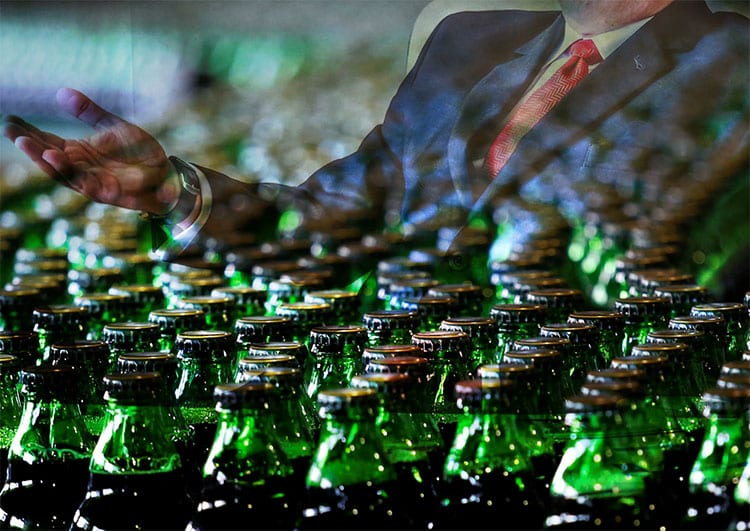
Alcohol industry: vector of poverty, disease, and social, environmental and economic harm
Alcohol is no ordinary product and Big Alcohol is no ordinary industry.
Similar to the tobacco industry, the alcohol industry is largely made up of a few gigantic, transnational corporations – mainly based in high-income countries. Alcohol producers of this magnitude pose the biggest challenge to governments’ right and duty to implement and enforce evidence-based alcohol policy measures to protect their populations from harm.
Big Alcohol’s enormous size and power allow for considerable resources to be devoted, directly or indirectly, to promoting its own private profit interests – that are fundamentally at odds with the public interest in evidence-based alcohol prevention and control to achieve and health and development for all.
The concentration of market power in the alcohol industry also means an acceleration of the industrial epidemic that is alcohol harm – clearly posing a threat to sustainable human development.
Big Alcohol: Harmful products and unethical business practices
The Alcohol industry – the producers, distributors, retailers and marketers of alcohol – is an unethical industry whose products, marketing and other business practices are fueling alcohol harm worldwide. In this way, Big Alcohol is a significant vector of underdevelopment.
The alcohol industry is obliged by law to maximize profits for its shareholders. Profit maximization means selling more alcohol to more people for a longer time of their lives. But alcohol is not an ordinary commodity.
Therefore, the business practices – including product development, pricing, marketing, corporate political interference, corporate social responsibility schemes, corporate hijacking of science and corporate public relations – of the alcohol industry are key in promotion, glamorization and expansion of alcohol use and related harms globally.
Big Alcohol’s deployment of aggressive marketing tactics and political lobbying are obscuring independent evidence about the real effects of alcohol use and are perpetuating myths about alcohol.The alcohol industry is a significant commercial determinant of health and sustainable development.
Worldwide problem: Big Alcohol interference in public policy making
The alcohol industry is increasingly challenging fundamental institutions, undermining their responsiveness to the public interest and eroding public trust in the functioning of institutions.
The global concentration of the alcohol industry into a small number of transnational alcohol corporations has powered the industry’s capacity to obstruct, derail and undermine alcohol policy at the national, regional, and local levels. This pursuit of their private interest comes at the cost of public health, well-being and development.
Alcohol industry interference in public policy-making is pervasive. Alcohol industry actors seek to influence policy in two principal ways:
- Framing policy debates in a cogent and internally consistent manner, which excludes from policy agendas issues that are contrary to commercial interests;
- Adopting short- and long-term approaches to managing threats to commercial interests within the policy arena by building relationships with key actors using a variety of different organizational forms.
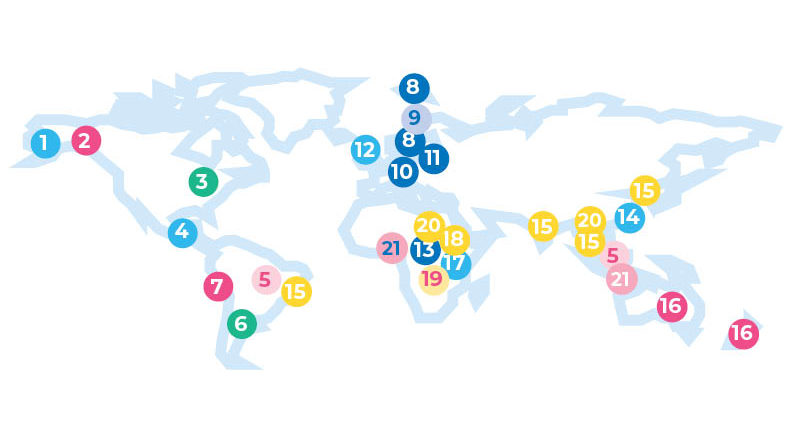
Corporate capture of public policy-making processes and involved institutions to prevent and reduce alcohol harm is a reality in countries around the world.
- Documented cases from around the world show how the alcohol industry interferes with public policy-making processes to derail, obstruct, and undermine the formulation and implementation of evidence-based and WHO-re-commended alcohol policy best buy measures – often in clear opposition to public opinion.
Big Alcohol & SDGs: Conflict of interest
The producers of alcohol and other unhealthy commodities are commercial determinants of ill-health, economic harm and underdevelopment.
- A growing proportion of the global burden of disease can be attributed to the commercialization of harmful products like alcohol that are driven by industry giants.
To effectively curb the commercial drivers of this obstacle to development, alcohol availability, affordability, and marketing (three Best Buys) need to be regulated.
But these public policy goals are a direct threat to the core business interest of Big Alcohol: to maximize profits by increasing alcohol consumption everywhere.
Big Alcohol relies on heavy and excessive alcohol use for its profits.
- UK: Alcohol sales would decrease by 38%, a value of £13 billion, if consumers would NOT use alcohol in excess of recommendations from the UK’s National Health Service.
Big Alcohol: Corruption and bribery as business practices
The alcohol industry, especially the biggest multi-national corporations of the beer and liquor industries, have a long and appalling track record of using unethical business practices to pursue profits. Cases of corruption and bribery are well documented and seem to be systemic.
Heineken appears to have had an active hand in creating a culture of fraud and corruption […], writes Olivier van Beemen in “Heineken in Africa”.
The book “Heineken in Africa” provides a systematic and thorough investigation into the business dealings of a multinational beer giant in Africa. The book details cases of bribery and corruption in countries across the continent, such as Nigeria, Congo and Burundi.
Big Alcohol: No partner for sustainable development
The alcohol industry has often gone and keeps going to extraordinary lengths to undermine and influence public policy in ways that are unethical.
Harmful business practices are taken out of the playbook of Big Tobacco:
- Tax schemes by multinational alcohol corporations are exploiting countries, especially in the global south.
- Aggressive lobbying seeks to block the implementation of evidence-based measures to regulate alcohol in the public interest.
- Marketing often targets children and youth and often depicts women in de-humanized, sexualized ways – perpetuating harmful gender stereotypes and norms.
- Self-regulatory schemes are systematically violated by the alcohol industry.
The alcohol industry fuels the climate crisis, environmental degradation, biodiversity loss and water and food insecurity.
The alcohol industry erodes economic productivity, sustainability and threatens considerable parts of countries’ GDPs.
And the alcohol industry is fueling massive inequalities within and among countries and societies, including disproportionate alcohol harm for children and youth, women and people of lower socio-economic status.
Catalyzing Development
Alcohol policy catalyzes sustainable development
The alcohol policy best buys are cost-effective, high-impact and evidence-based population-level solutions to the heavy burden of alcohol harm. Alcohol taxation, availability regulations and alcohol advertising bans are formidable catalysts for the SDGs.
According to the World Health Organization (WHO) and the United Nations Development Program (UNDP), action is needed to reduce the burden of alcohol-related harm in low-, middle- and high-income countries. Alcohol control essential for development.
The alcohol policy best buys are significant catalysts for the SDGs.
Implementation of the three alcohol policy best buys would result in a return on investment of $9 for every $1 invested.
However, recent modelling forecasts that global targets to alcohol use and related harm will not be met. For example, in Africa, 32% of the adult population currently consumes alcohol. Without action, Africa is facing an increasing in both the absolute number as well as in the proportion of people using alcohol, the per capita amount of alcohol consumed and in heavy episodic alcohol use.
South-East Asia is already affected by such a trend, with a 29% increase of alcohol consumption since 2010.
Alcohol taxation is pro-poor, pro social inclusion, and pro equality
Raising taxes on alcohol to 40% of the retail price could have [a big] impact. Estimates for 12 low-income countries show that [alcohol] consumption levels would fall by more than 10%, while tax revenues would more than triple to a level amounting to 38% of total health spending in those countries. Even if only a portion of the proceeds were allocated to health, access to services would be greatly enhanced,” according to the World Health Report 2010.
A disproportionate share of the health and economic costs of alcohol falls on poorer households. But they are more responsive to increased prices than richer households. Therefore, alcohol taxes disproportionately benefit the poor through reducing alcohol use and related harm, such as having fewer sick days, longer and more productive working lives, and spending less on health care.
Increased resources from alcohol taxes can be invested in programs that favor the poor, in this way further strengthening the benefits.
- Increasing alcohol taxes will avert 9 (20% increase) to 22 (50% increase) million premature deaths over a 50 year period.
- Over 50 years, a tax that increases alcohol prices by 20% over current levels could generate almost US$9 trillion in additional revenues; for a 50% increase, the gain could be almost US$17 trillion in additional revenues.
Alcohol taxation: Key tool to tackle alcohol as obstacle to the SDGs
Employing evidence-based alcohol taxation reaps significant benefits across 10 of 17 SDGs. There is strong evidence that raising alcohol taxes is an effective strategy for reducing alcohol consumption and related harms.
Alcohol taxation is a triple win measure:
- It reduces the burden of alcohol as obstacle to health and development for all
- It helps raise domestic resources.
- It promotes health and development by making funds available to be invested in government programs, services and campaigns.
Countries like Kenya, India and South Africa illustrate the massive obstacle alcohol poses to reaching the SDGs. The costs of the alcohol burden are massive.
Countries like Thailand, Philippines and Lithuania show how alcohol taxation can be used in an evidence-based, cost-effective way to achieve key SDG targets.
Report: Alcohol Taxation – A Win-Win Measure For Financing Development
A landmark report by Movendi International and the East African Alcohol Policy Alliance (EAAPA) details the benefits of alcohol taxation for development.
With state-of-the-art science this report examines the effects of alcohol taxes, and outlines the mechanisms of alcohol taxation and its consequences for fiscal space, health promotion and sustainable development.
In a novel approach, the report highlights how alcohol taxation, if employed in an evidence-based manner, reaps benefits for a number of Sustainable Development Goals and what the potential of for helping finance development.
The report finds that 10 out of the 17 new Sustainable Development Goals – such as eradication of poverty and hunger, gender equality, good health and well being, quality education, or economic growth – are positively impacted by alcohol taxation measures.
The report concludes: Alcohol taxation is a win-win measure for increasing fiscal space, boosting health promotion and financing sustainable development.
